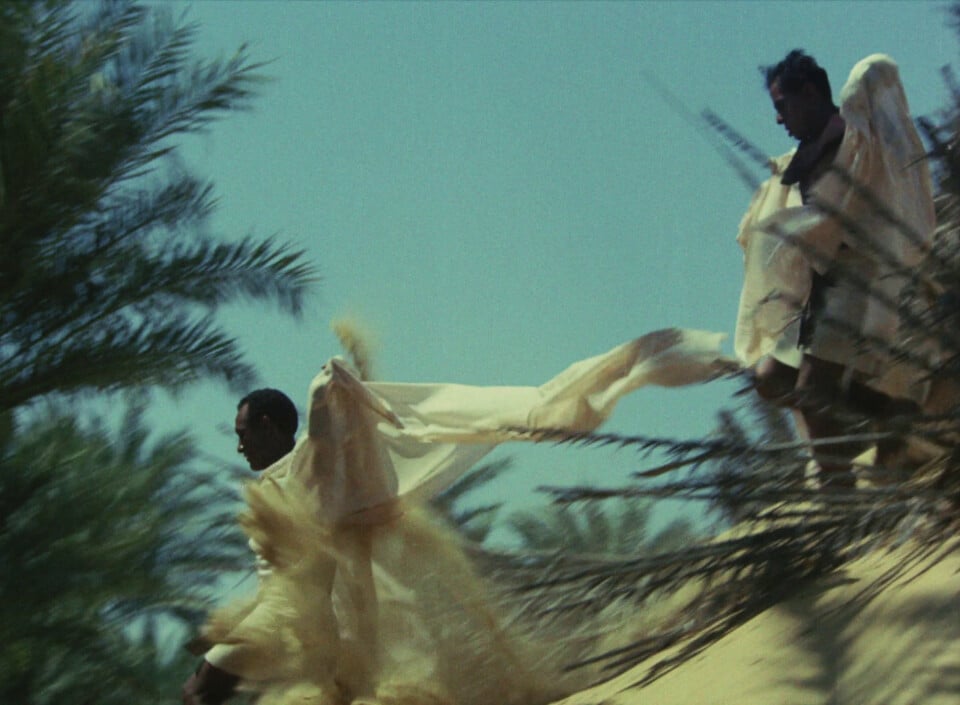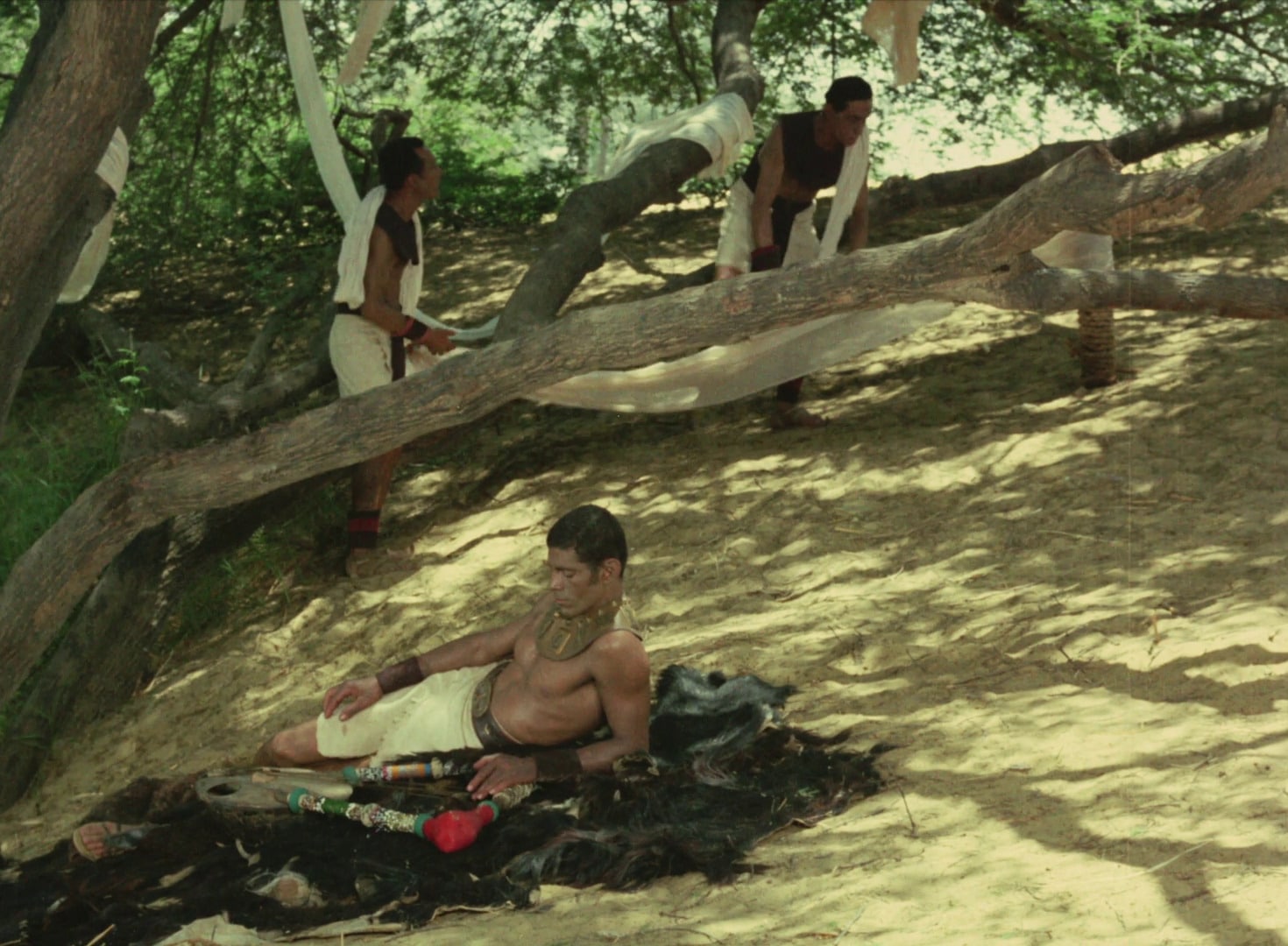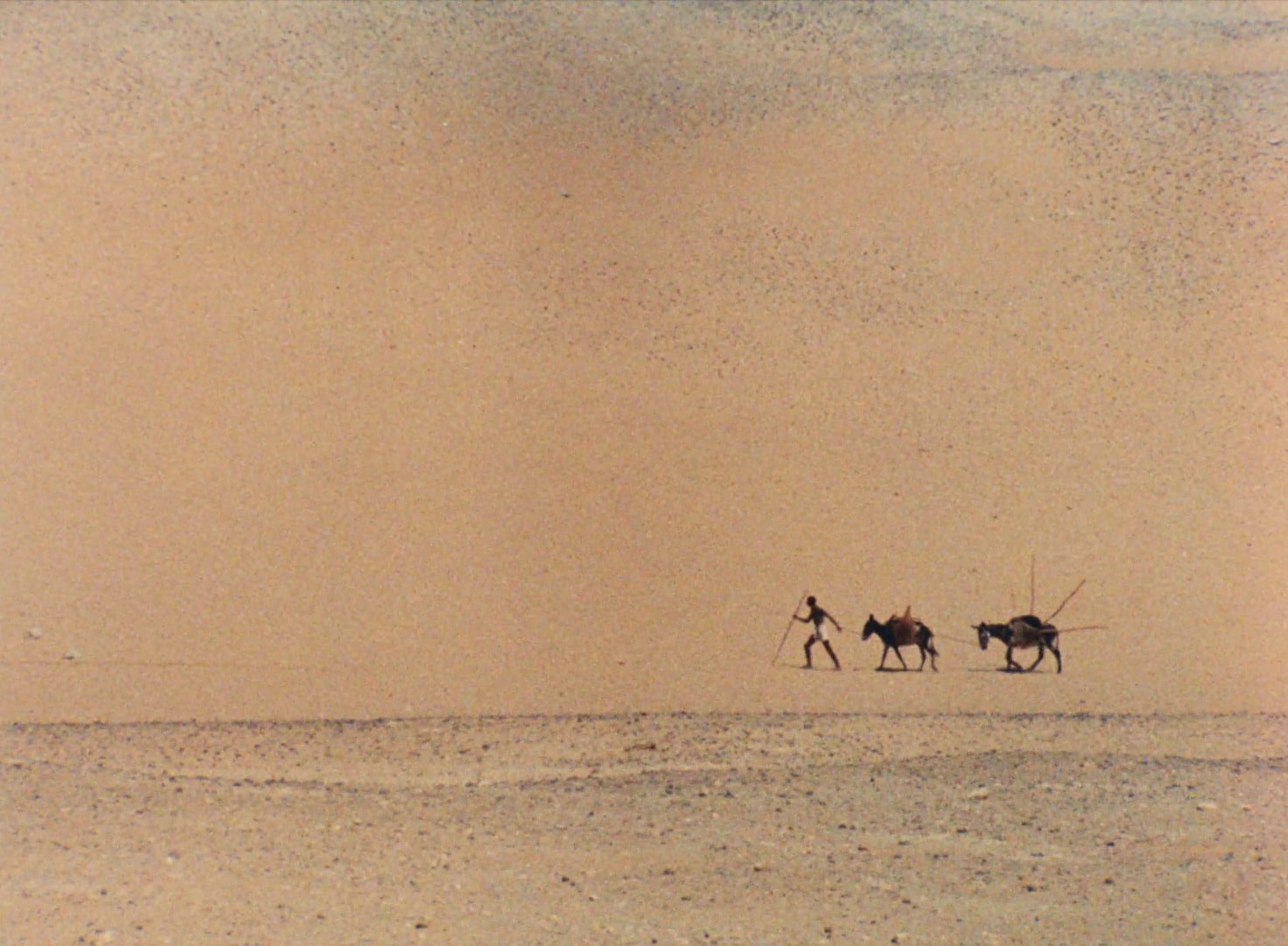Set in 1881, a year before the British invasion of Egypt, the film is based on the true story of an Upper Egyptian clan who controlled a mountain near Thebes. Members of the tribe raided the afterlife cache of Twenty-First Dynasty royal mummies and sold these artifacts on the black market. The film opens as Wanis, a young man from the tribe, becomes its leader following his father’s death and brother’s murder. As the chiefdom’s new leader, the young Wanis is bestowed and burdened with his tribe’s secret regarding the source of their livelihood. He grapples with his loyalty to the tribe and his sense of duty to preserve his country’s heritage. The plot unfolds with Shakespearean intensity and a deliberate, somber pace as Wanis broods over and ultimately decides to expose and end the looting practice.
Filmed in Luxor, Al-Momia is characterized by its painting-like scenography of stark and static desert landscapes, juxtaposed with striking costumes, dramatic chiseled faces, and a haunting score. Poetic monologues of classical spoken Arabic enhance a sense of monumentality that had not been utilized in other Arab cinema of this historiography. Filmed immediately following Egypt’s defeat in the Six-Day War of 1967, Al-Momia adopted a nationalist tone infused with the undercurrents of quandary and regret. The confluence of its painterly, minimalist cinematography, formal dialect, and modern-day preoccupations imploded ideas of what cinema could be, introducing a novel artistic vision and sensibility to the Arabic screen. It was the first Egyptian film to screen in North American theaters and was Egypt’s entry for the 43rd Academy Awards in the Best Foreign Language Film category. Despite its initial failure commercially, Al-Momia eventually became a classic and was restored by Martin Scorsese’s The Film Foundation in 2009.


